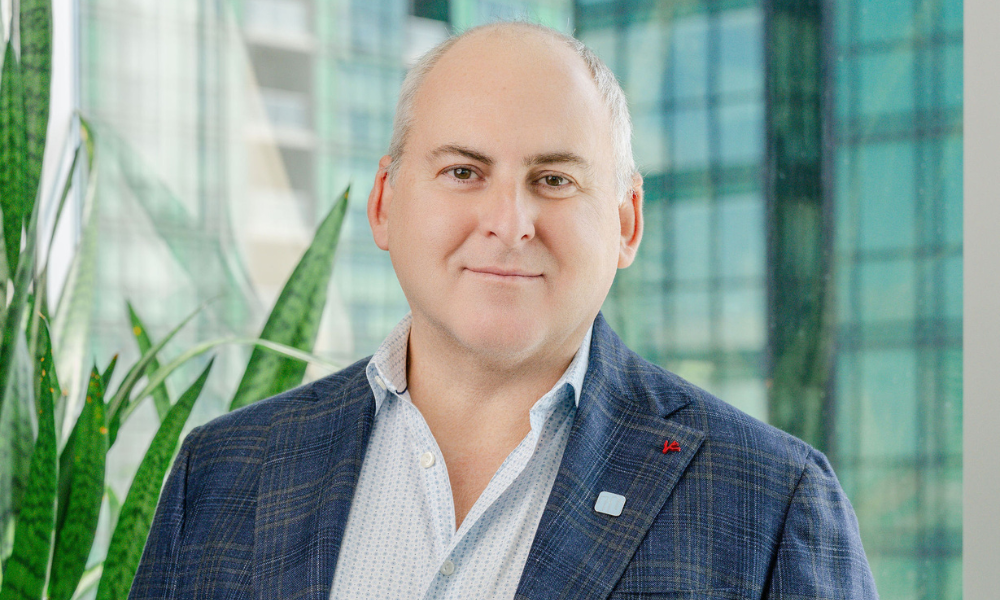Amid market uncertainty, John McKinlay outlines where he thinks real estate capital should flow in 2025 and why Canada remains a global safe haven.

When John McKinlay stepped into the role of CEO at Centurion Asset Management Inc., it wasn't a leap into the unknown but a calculated move toward what he sees as the most resilient and opportunity-rich corner of the real estate sector.
As a vertically integrated private REIT with a heavy focus on Canadian multifamily residential apartments, student residences, and medical office properties, Centurion isn’t doing much outsourcing. Instead, McKinlay emphasized the firm is sticking to a model that’s already been tested by fire.
“This is a platform that has been stress tested as the most resilient asset class, certainly in Canada, but also globally over the last little while,” he said.
Still, 2025 isn’t shaping up to be a year for complacency. Since 2020, the real estate industry has faced a series of shocks, including a global pandemic, spiralling interest rates, and ongoing global economic uncertainty. McKinlay pointed out that these events lacked precedent, making traditional recovery playbooks obsolete.
“When COVID hit, nobody had a script for that,” he said, adding that today’s environment is “a brave new world with the architect of tariffs, who won’t disclose whether this is a negotiating technique or permanent. You must stick to your knitting but also have to learn lessons and figure out ways to apply them,” said McKinlay.
He’s wary of those trying to time the bottom of the market, as he likens today’s tariff speculation to investor behaviour during the downturn in real estate investment trusts (REITs) in 2023 and 2024. Too many, he argued, tried to time the market. He cites that basic portfolio theory is investing responsibly through all cycles.
“We’re not market timers,” he said. “We stick to what’s worked as fiduciaries and deliver outsized returns with appropriate risk to our investors.”
McKinlay also acknowledged how quickly investors can shift sentiment based on temporary headlines. He pointed to Canadian retail as an example, recalling how the sector was written off during the pandemic, only to rebound unexpectedly.
“Everybody thought retail was going the way of the dodo in 2020 and then three years later, it’s the best performing asset class,” he said.
Consequently, he still sees value in top-tier shopping centres, noting that super-regional malls in primary markets, especially in Canada, continue to attract global interest.
“I’ve always had an affinity for the best-in-class, primary market, super-regional malls. I think they’re a fortress,” he said, pointing to Toronto as a major gateway for international retailers looking to break into North America.
“Toronto is historically the only North American market that’s in the top 10 in terms of attracting retailers.”
Even office space, long considered undesirable, is beginning to see renewed interest, but only for premium, well-located properties, while industrial real estate, which was “hugely desirable” from 2020 through 2024, is now in freefall because the sector “just got overheated,” he noted.
That’s why Centurion isn’t planning to overhaul its proven strategy due to short-term volatility. “We’re not going to upend a successful model that’s been delivering returns for 15 years for two months of volatility,” he said.
Still, McKinlay is alert to opportunities, especially if global investor sentiment starts shifting away from the United States. He raised the possibility that foreign capital might increasingly view Canada as a safer bet. He pointed to Canada’s long-term track record as an example.
“Over 25 years, Canada’s overall asset class real estate return has been the highest in the G7, right there with Australia,” he noted.
When compared to the US, UK, and Europe, Canadian real estate has shown lower volatility and more stability, he emphasized.
He also credits Canada’s historical immigration strength for underpinning residential demand. Despite the need for immigration policy reform, McKinlay sees housing demand as fundamentally linked to a successful immigration model.
“For 20 years, up until 2020, Canada was the best immigration market in the G7. It had the highest quality of immigrants,” he said, adding that “60 per cent of Canada’s 300,000–350,000 immigrants were in the Organisation for Economic Co-operation and Development (OECD)’s economic immigrant category - best in the G7.”
To him, this is both a challenge and an opportunity. While recent policies have faltered, the infrastructure for success is already in place.
“The immigration policy we all know has to be revisited, but I am a firm believer in what can be broken in three to four years can be fixed,” he said, “with proper, responsible policy adjustment.”
McKinlay ultimately believes residential real estate has clearly demonstrated its strength over the past five years, especially when measured against global alternatives. He described it as “king of the castle” in terms of performance and resilience.
While other asset classes offer opportunities, he thinks Canada’s defensive characteristics and consistent returns give it an advantage over many western economies.
So, what’s next for Centurion’s newly appointed CEO? He believes the future lies in building on the firm’s strengths—scaling the existing platform, diversifying capital sources, and eventually introducing complementary products like mortgage or value-add vehicles in the residential space.
He also wants to build on Centurion’s reputation as a research-driven firm by institutionalizing investor communications.
“We’ve always been known as a macro view research shop. We want to formalize that,” he said, outlining plans for regular updates and white papers to deepen transparency and engagement with investors.
Looking ahead, McKinlay hinted at future product expansion as Centurion plans to introduce complementary investment vehicles that broaden the firm’s appeal without abandoning its core strengths.
“Lessons learned are that the capital stack has completely changed in terms of where people source capital from, and we'd be irresponsible not to learn from that,” said McKinlay.



